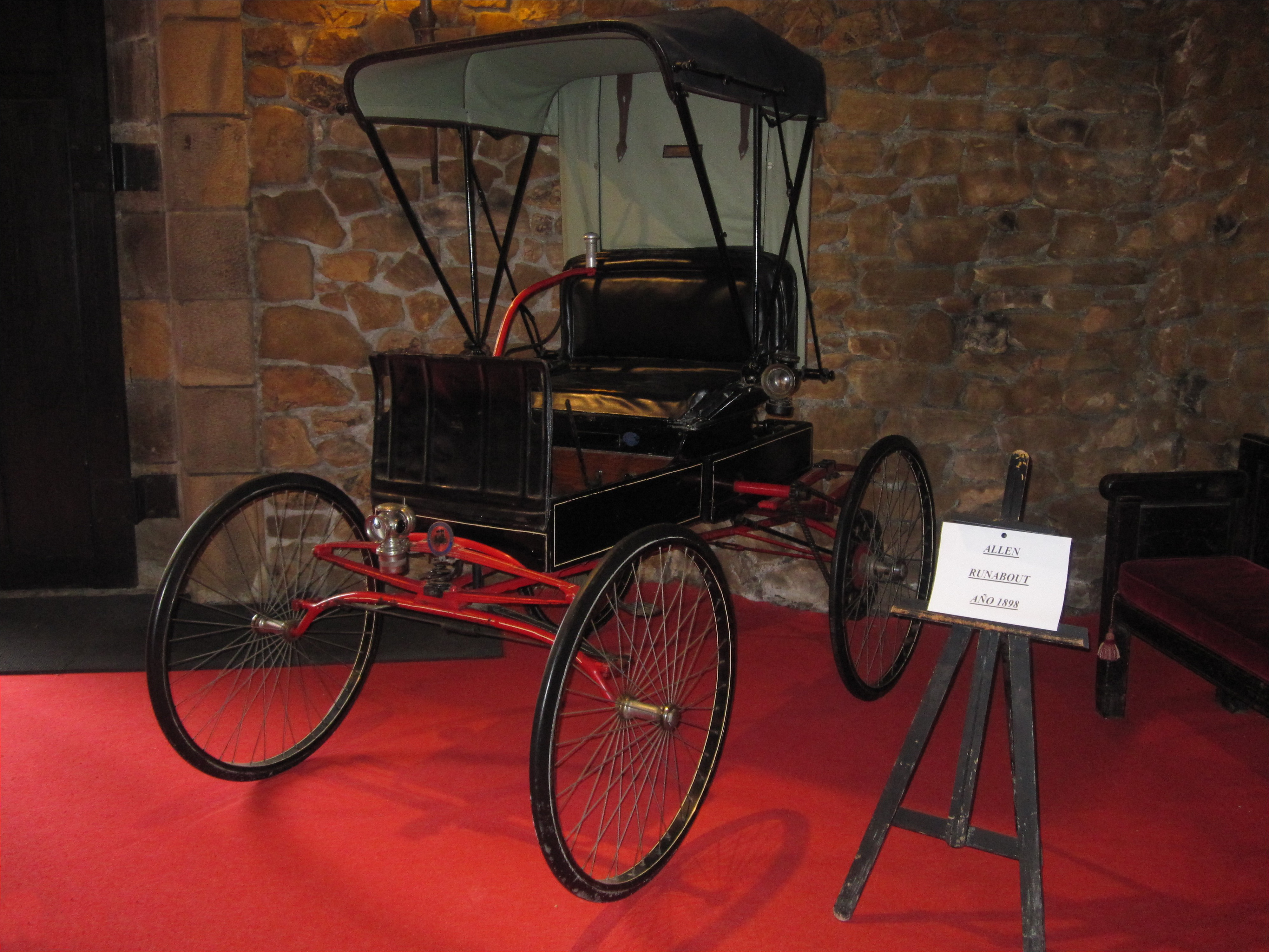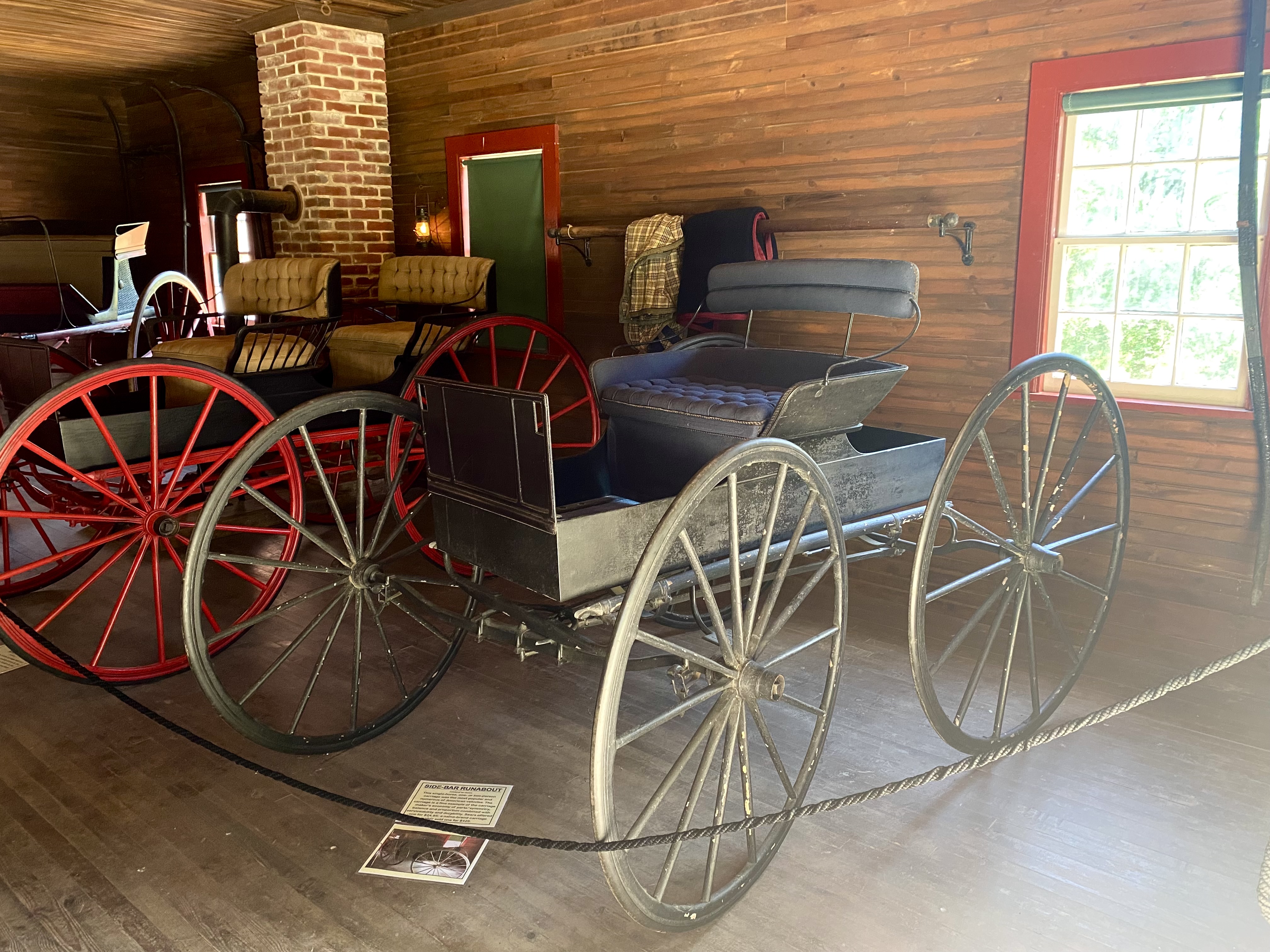Runabout (carriage) on:
[Wikipedia]
[Google]
[Amazon]
 A runabout is an American light, open,
A runabout is an American light, open,
at Historic Washington, Kentucky. Accessed 17 April 2015 A typical example was the light buggy used in the 1890s for daily duties by senior staff of the

 A runabout is an American light, open,
A runabout is an American light, open, horse-drawn vehicle
A horse-drawn vehicle is a mechanized piece of equipment pulled by one horse or by a team of horses. These vehicles typically had two or four wheels and were used to carry passengers and/or a load. They were once common worldwide, but they have m ...
with four large wheels that predated the runabout car.
Similar to a buggy, the runabout was used for informal, utilitarian
In ethical philosophy, utilitarianism is a family of normative ethical theories that prescribe actions that maximize happiness and well-being for all affected individuals.
Although different varieties of utilitarianism admit different charac ...
travel or "running about" on errands.
One type was also called a "driving wagon", made very light in order to be easily hitched by one person, and easily pulled over long distances by a single horse.The Carriage Museumat Historic Washington, Kentucky. Accessed 17 April 2015 A typical example was the light buggy used in the 1890s for daily duties by senior staff of the
San Francisco Fire Department
The San Francisco Fire Department (SFFD) provides firefighting, hazardous materials response services, technical rescue services and emergency medical response services to the City and County of San Francisco, California.
History
Volunteer Depa ...
. Runabouts could be either fancy or plain, but not encumbered with fenders, heavy tops or optional accessories that added weight.
History
In 1881,Rufus Meade Stivers
Rufus is a masculine given name, a surname, an Ancient Roman cognomen and a nickname (from Latin '' rufus'', "red"). Notable people with the name include:
Given name
Politicians
* Rufus Ada George (born 1940), Nigerian politician
* Ruf ...
produced runabout bodies using a patent held by Joseph Tilton. Stivers, a blacksmith and wheelwright, produced the runabouts in his carriage manufactory on East 31st Street, Manhattan, established in 1851.
According to ''The Carriage Journal'',

The special feature of the runabout was that the body was hung low by using cranked axles, and the side-bars were attached to legs at the top of the crank. The original runabout was made without a top, and, besides hanging low which made for steadiness, it was roomy and comfortable.Stivers patented the "runabout" name and threatened to sue other manufacturers for infringement. However, buggies titled "runabout" were produced by other manufacturers and soon applied to many different shapes without regard to the original meaning.
Notes and references
Carriages {{vehicle-stub